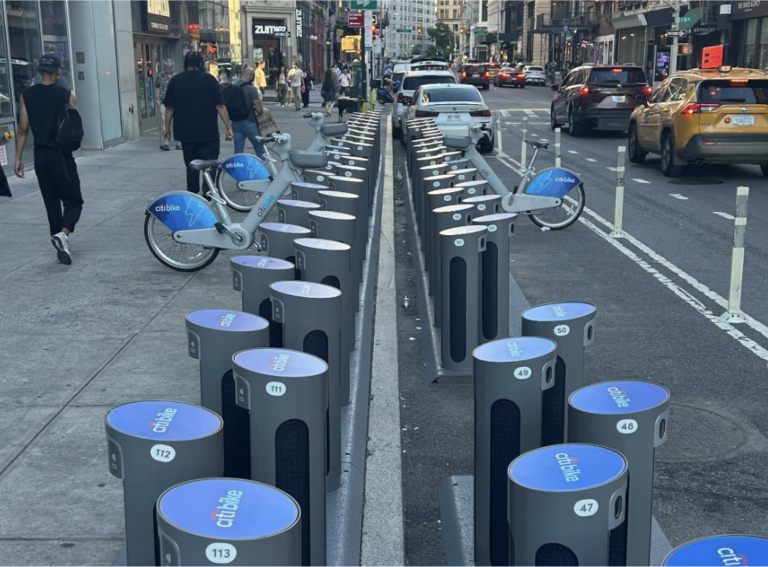Authors: Benjamin Hindson and William Sired, Brokers for Aon’s Digital Economy Practice.
Most micromobility operators will be laser focused on the unit price economics of their operation – or the cost per customer trip that any platform facilitates. A large slice of that cost stems from insurance for both the general liability cover needed to protect the platform itself from claims such as negligence and third-party damage, but also protection – where it’s required by the regulators – for rider liability.
For platforms, those insurance costs can be a barrier to much needed growth. In London, for example, where micromobility providers participating in the ongoing rental e-scooter trials are obliged to provide rider liability cover, it can be more expensive for someone to travel using an e-scooter than it is to take a comparable trip by bus or tube. The majority of that cost is driven by insurance, so if a business can reduce its insurance cost, then it can lower the cost per trip and make its service accessible to more people; driving up market share, revenues, and ultimately delivering better profitability for the platform.
Scaling up to lower insurance unit costs
One of the obvious ways to lower insurance unit cost is to scale up an operation.
In the UK, micromobility platforms participating in the e-scooter trials must carry unlimited third-party motor liability. Depending on the local municipalities, they also may be required to buy other insurance to protect their customers, such as personal accident cover. Others, in order to differentiate themselves in this competitive market, may also buy products beyond the mandated minimum covers.
There is always a minimum premium at the corporate level that an individual platform will pay. Whether the operator is running 20 e-scooters or 20,000, there is still a minimum amount it will have to pay, which will be divided by the overall exposure. By getting more e-scooters on the road, there will be more risk exposure for a platform, but there are economies of scale in having that bigger risk pool. It is one of the reasons why the market is dominated by larger platforms rather than a proliferation of smaller outfits.
Total cost of risk
Aside from scale, an aspiration for most operators, it is vital for businesses to look at their total cost of risk, which will include the general liability cover every platform will need to consider in order to protect their balance sheet, as well as areas like administrating any claims.
It makes little sense to only focus on, for example, trying to save 20% on premium in a challenging insurance market when overall risk costs could be reduced by 30% if claims were managed in a better way.
This is where a proactive approach to risk management could also bring dividends in controlling insurance premium costs in an inflationary period, or even helping to reduce them. Having the right processes and procedures in place means that if there is an issue with an e-bike or e-scooter, a business can show an insurer a key timeline of how it has identified these key risk exposures – such as brake failures – and has taken steps to mitigate them. This approach will make insurance underwriters feel more comfortable about covering the risk and may result in premium savings.
The value of good data
Another way of making underwriters feel more comfortable is to provide them with plenty of the right data. Underwriters love data and the more detailed and granular data (both historical and current) a platform can provide in terms of how many rides have been taken, what time of day, how long they were, and what kind of roads were travelled on, then all the better. A good data sharing agreement with an underwriter that operates, not just when taking out a policy, but throughout the policy period goes a long way to building and maintaining an ongoing relationship. The fewer assumptions an underwriter has to make about a risk, the more likely the premiums charged will accurately reflect the risk exposure being presented and the cover afforded to the platform is tailored to their individual needs.
The level of risk a business is willing to accept in terms of the retention – or excess or deductible – on its insurance policy is also important from an underwriter’s perspective. If the micromobility platform is willing to take higher retentions, it shows they are comfortable with their own product, business and exposure. It can be a good way of saving money in terms of premium, but any savings generated from transferring less risk should also be factored into the operator’s total cost of risk given the insured will contribute proportionally more on claim settlements.
Insurance accurately reflecting exposure
With better data, scale and experience of the emerging market, insurance premiums will become much more reflective of the risk exposure.
Some operators are seeing their premiums rise as claims experience develops and programmes are, as a result, priced more appropriately. However, as legislation changes in respect to the micromobility market, such as with the use of private e-scooters on public roads, expect to see insurers enter the market to take advantage of the greater volume of business. This will increase competition – from the three or four insurers who currently dominate micromobility – and may make premiums more competitive.
In the meantime, a more proactive approach to risk management, a better understanding of the total cost of risk, and a willingness to share data with insurers will help to manage unit costs which will in turn increase a platform’s competitiveness.
Whilst care has been taken in the production of this article and the information contained within it has been obtained from sources that Aon UK Limited believes to be reliable, Aon UK Limited does not warrant, represent or guarantee the accuracy, adequacy, completeness or fitness for any purpose of the article or any part of it and can accept no liability for any loss incurred in any way whatsoever by any person who may rely on it. In any case any recipient shall be entirely responsible for the use to which it puts this article.
This article has been compiled using information available to us up to 21/03/23.
Aon UK Limited is authorised and regulated by the Financial Conduct Authority. Registered in England and Wales. Registered number: 00210725. Registered Office: The Aon Centre, The Leadenhall Building, 122 Leadenhall Street, London EC3V 4AN. Tel: 020 7623 5500.











